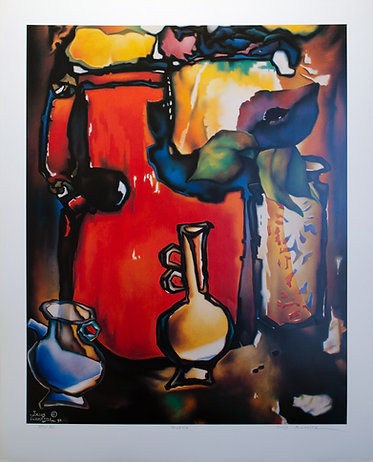Four tips for Starting Your Art-Collecting Journey
- Dana Alward
- Oct 5, 2022
- 3 min read
Updated: Oct 5, 2022
Art is a part of our everyday lives, making it only fitting that many chose to collect pieces to decorate their homes and offices. While the availability of stock and commercial art has risen, nothing compares to collecting original pieces directly from living artists. However, stepping into the art collecting world can seem a bit daunting with the wide price ranges and seemingly endless options of art to choose from. This article will give new art collectors tips for starting their collection, and ease their minds as they enter the wonderful and expressive world of contemporary art.
Do your research, find your passion
An art collection can be whatever you wish it to be. Typically though, one tends to gravitate towards styles and mediums that interest them. Researching the types of art that pique your interest is a great first step to curating your future collection. Do you gravitate towards abstract paintings? Landscapes or still-life compositions? Or, in a more general sense, do certain color palettes speak to you more than others? These are all things to consider when planning a collection.
It is also important to develop a basic knowledge of the styles and artists that interest you, as it allows you to be an informed buyer. Learning the history and compositional features of different art eras and styles gives you the tools to think critically about the art you observe, and can add a sense of validity and certainty to future purchases.
Discover the spaces best for you
There are many routes to take in purchasing art. Whether it be festivals, galleries, or even online, finding the spaces that speak best to you can help take away the pressures that can come with being a first-time buyer. Visit local galleries in your community to get an idea of the kinds of art found in each, along with the general price points and scope of inventory.
As mentioned, there is growing popularity of buying exclusive art online. This is a great option to view large collections all at once, and to search for the specifics of what you are looking for. Here at Venvi, our online shop includes hundreds of paintings from all of our artists, and can be searched by size, price, date created, and even canvas orientation. While nothing beats the option to view original art in person, buying online can be a convenient and effective way to begin your collection.
Start small
Rome wasn’t built in a day, and neither will your collection. Many galleries offer a wide range of prices and sizes to choose from, so deciding beforehand what fits best for your budget is a great way to be strategic while viewing an exhibition or collection available for purchase. If large price tags feel intimidating at first, try looking for exhibitions featuring emerging, lesser-known artists. This is a great way to find quality pieces within your budget, while also supporting young, emerging artists.
Another option for buying on a budget is to look for limited-edition prints. While these aren’t original paintings, this gives buyers the availability to purchase art from artists that may be out of their budget, and does not come with the level of commitment that purchasing an original artwork can.
In the end, quality always trumps quantity. As you begin your journey as a collector don’t feel the need to fill your walls as quickly as possible. Being intentional with your purchases allows you to slowly, but surely, build a collection that sparks joy within your home or space.
Make connections, join communities
Unlike making a purchase at a department store, collecting art is an act of intentional community engagement. Partaking in your local arts community is a great way to make connections, discover new artists, and further aid in supporting the arts as a whole. Most galleries develop close relationships with their clientele-especially collectors, and can offer advice and notice of new events or works in the area.
Visit your local art museums, attend the opening receptions of your community galleries’ exhibitions, take a stroll through the annual art festivals in your area. Art isn’t created in a bubble. Getting to know the artists and arts advocates in your community is one of the most exciting and rewarding parts of art collecting; becoming an active member of the living history that is contemporary art.





Comments